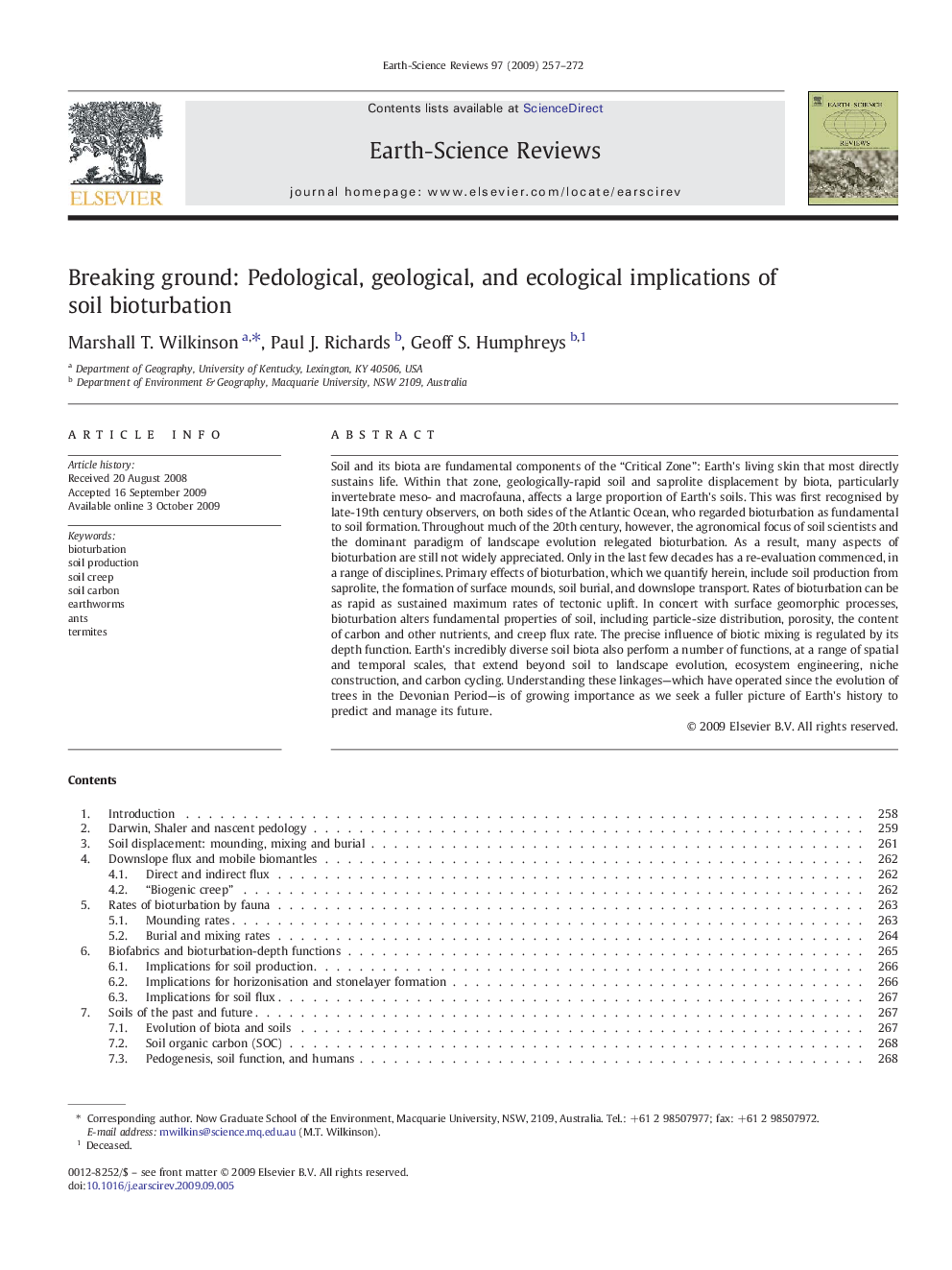| Article ID | Journal | Published Year | Pages | File Type |
|---|---|---|---|---|
| 4726199 | Earth-Science Reviews | 2009 | 16 Pages |
Soil and its biota are fundamental components of the “Critical Zone”: Earth's living skin that most directly sustains life. Within that zone, geologically-rapid soil and saprolite displacement by biota, particularly invertebrate meso- and macrofauna, affects a large proportion of Earth's soils. This was first recognised by late-19th century observers, on both sides of the Atlantic Ocean, who regarded bioturbation as fundamental to soil formation. Throughout much of the 20th century, however, the agronomical focus of soil scientists and the dominant paradigm of landscape evolution relegated bioturbation. As a result, many aspects of bioturbation are still not widely appreciated. Only in the last few decades has a re-evaluation commenced, in a range of disciplines. Primary effects of bioturbation, which we quantify herein, include soil production from saprolite, the formation of surface mounds, soil burial, and downslope transport. Rates of bioturbation can be as rapid as sustained maximum rates of tectonic uplift. In concert with surface geomorphic processes, bioturbation alters fundamental properties of soil, including particle-size distribution, porosity, the content of carbon and other nutrients, and creep flux rate. The precise influence of biotic mixing is regulated by its depth function. Earth's incredibly diverse soil biota also perform a number of functions, at a range of spatial and temporal scales, that extend beyond soil to landscape evolution, ecosystem engineering, niche construction, and carbon cycling. Understanding these linkages—which have operated since the evolution of trees in the Devonian Period—is of growing importance as we seek a fuller picture of Earth's history to predict and manage its future.
